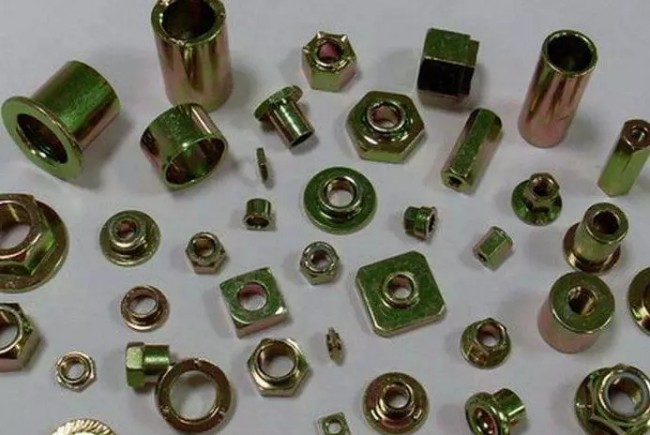The stainless steel nut is a kind of stainless steel firmware. It is an indispensable accessory in stainless steel screws. It can be tightened, fixed, etc. with the help of stainless steel nuts. The stainless steel nut is made of stainless steel. It is corrosion-resistant, rust-free, acid-resistant and so on. It has a long service life. Most of the nuts are made of stainless steel. Stainless steel nuts are available in a variety of shapes, such as hexagons and circles, and are available in a variety of sizes. So, what are the uses of stainless steel nuts?
Stainless steel nut use:
The main function is to connect the fastening parts in environmental protection equipment, medical equipment, communication equipment, power facilities, electronic products, instrumentation, food machinery, petrochemical, ship assembly, pump and valve pipelines, building curtain walls, outdoor venues, sports facilities, Outdoor decoration and other industries have applications.
Stainless steel nut price:
3.4 yuan, 5.2 yuan, 5.6 yuan, 1.5 yuan and other price points. (Price source network, for reference only)
Stainless steel nut specifications:
Generally, it is necessary to divide the fine nut and the coarse nut first, but in fact, no matter what fine teeth or coarse teeth, their specifications are the same. Their specifications are M3, M4, M5, M6, M8, M10 and so on. But there is also a kind of hexagonal nut with a British system and a US system. This is just a different national standard. Our Chinese-made hex nut is called the national standard.
Stainless steel nut standard:
For hex nuts, the commonly used standards are: GB52, GB6170, GB6172 and DIN934. The main difference between them is: GB6170 is thicker than GB52, GB6172 and DIN934, commonly known as thick nuts. The other is the difference on the side, the opposite side of DIN934, GB6170, GB6172 in the M8 nut series is 13MM, 1MM smaller than the 14mm on the opposite side of GB52, the nut of M10, the opposite side of DIN934 and GB52 is 17MM. It is 1MM larger than the opposite side of GB6170 and GB6172. The nut of M12, the opposite side of DIN934 and GB52 is 19MM, which is 1MM larger than the opposite side of GB6170 and GB6172. For the M14 nut, the opposite side of DIN934 and GB52 is 22MM, which is 1mm larger than the opposite side 21MM of GB6170 and GB6172. In addition, the nut of M22, the opposite side of DIN934 and GB52 is 32MM, which is 2MM smaller than the opposite side of GB6170 and GB6172. (GB6170 and GB6172 have the same width except for their different thicknesses.) The remaining specifications can be used without considering the thickness.
In terms of the inner hexagon, there are two versions in the national standard, one is GB70-76, the 76-year version, and the other is GB70-85, 85-year version, so in the actual business operation should pay attention to the difference: GB70-85 and DIN912 completely coincide Therefore, there is no difference in the use of the new standard, mainly the difference between GB70-76 and DIN912: the inner hexagonal product of M8 series, the round head diameter of GB70-76 is 12.5MM, which is more than the 13.27MM of DIN912. Smaller, the inner hexagonal product of the M10 series, the round head diameter of GB70-76 is 15MM, which is smaller than the 16.27 of DIN912. The inner hexagon of M12 series, the round head diameter of GB70-76 is 18MM, compared with the opposite side of DIN912 18.27 To be smaller, another round head diameter of the hexagonal GB70-76 of the M16 and M20 series is 0.33MM smaller than that of the DIN912, which is 24MM and 30MM respectively. The DIN912 is 24.33MM and 30.33MM respectively. In addition, the width of the inner side between the old standard and the German standard hexagonal hexagon is different due to different standards. The inner side of GB70-76 is smaller, and should be paid attention to in business operations.

What are the uses for stainless steel nuts? The article also introduces you to other aspects of stainless steel nuts. After reading, I believe that everyone has more understanding and understanding of stainless steel nuts. In addition to stainless steel, the nuts are made of iron, carbon steel, copper, aluminum and other metal materials. However, stainless steel nuts are the most widely used, which is inseparable from its superior performance. If you need to use a large number of stainless steel nuts in production, it is better to find a manufacturer to directly customize the price to be cheaper. 
Editor in charge: Hu Na
Yixing Jinke Optical Instrument Co., Ltd. is a high-tech manufacturer committed to research, development and manufacturing of high-quality spectral consumables. With 50 years of experience in research, development and manufacturing, our products include: glass, quartz Cuvettes, flow cell, Lens, reflector, filter, etc.
We have been continuously improving the company's R&D and preparation capabilities, optimizing the management system, and helping customers to continuously improve their product competitiveness. Our strategic partners cover chemical, pharmaceutical, biological, medical in vitro diagnosis, aerospace, communications, food, materials, environment, agriculture, inspection and quarantine and other fields.
As a spectrum accessories manufacturer with strong technical capabilities in China, Jingke Optics will try its best to provide more high-quality and convenient products and services for the majority of scientific researchers and instrument manufacturers, and work with you to create a better future!
Quartz Cuvettes,Cylindrical Quartz Cuvettes,Uv Cylindrical Cuvettes,Fused Optical Cells
Yixing Jingke Optical Instruments Co.,Ltd. , https://www.jkgxcn.com